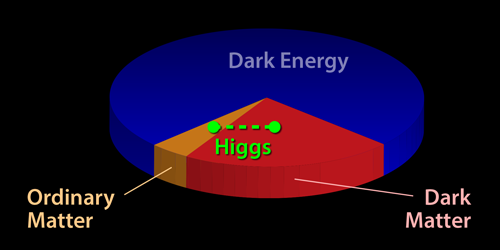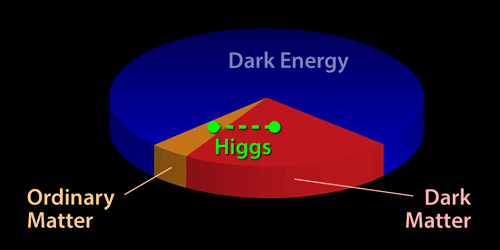Connecting Higgs to Dark Matter
The Higgs boson helps explain how particles obtain mass, so it seems fitting that it may offer the key to understanding dark matter, the dominant form of matter that—along with dark energy—makes up 95% of everything in the Universe. So-called Higgs-portal models assume that dark matter particles interact with normal particles through the exchange of a Higgs boson. If correct, then researchers would expect a dark matter signature in Higgs decays at the Large Hadron Collider (LHC) in Geneva. A new theoretical study removes some of the uncertainty in these models, improving the limits set by the LHC on dark matter candidates.
If dark matter does interact through Higgs intermediaries, then this should affect—in a reverse sense—how Higgs bosons decay. Specifically, some fraction of Higgs bosons created in the LHC should decay into dark matter particles, which would escape detection. The fact that none of these “invisible decays” have been observed allows researchers to set a lower limit on the likelihood, or cross section, for dark matter particles interacting with a nucleon.
Unfortunately, the current cross-section limits on Higgs-portal dark matter have big error bars, in large part because these models depend on the coupling between the Higgs boson and nucleons, which is uncertain. Martin Hoferichter of the University of Washington, Seattle, and his colleagues reevaluate this Higgs-nucleon coupling. They incorporate recent progress in phenomenological and lattice-QCD calculations, as well as a first-ever derivation of the contribution from the Higgs boson coupling to two nucleons. Their resulting cross-section limits provide a sharper boundary for ruling out possible dark matter particle candidates, in particular for the mass range of 1 to 10 GeV, where direct detection experiments are less sensitive.
This research is published in Physical Review Letters.
–Michael Schirber
Michael Schirber is a Corresponding Editor for Physics based in Lyon, France.





